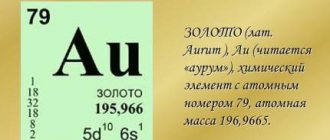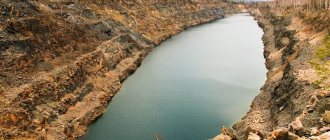Natural resources
Water resources. There are more than 12 thousand rivers, about 2,700 lakes and various reservoirs in the Republic.
There are rich underground springs. Hydrological resources:
- Rivers. All rivers belong to the Kama (Volga) and Ural river basins. Only a small part in the north-west belongs to the Ob basin. The largest rivers include: Agidel (Belaya) and the tributaries Ufa, Dema, Sim, Nugush, Urshak, Ashkadar, Sterlya; Sakmara with its tributaries Urman Zilair, Kurgashly, Big and Small Ik, Yalan Zair. Rivers carry out the flow of precipitation in those directions - to the south, west and east.
- Lakes. They are located mainly in the Trans-Ural territory and have an oblong shape, stretching parallel to the mountain ranges. The largest lakes are: Asylykul, Akkul, Kandrykul, Yalankul, Urgun, Karagaily, Bolshoye Uchaly, Uzunkul, Surtandy, Yaktykul, Chebarkul, Yaugul, Atavdy, Talkas, Muldakkul.
- Reservoirs. Reservoirs have been created in 45 regions of the republic. Reservoirs (with a volume of 1000 or more thousand cubic meters) belong to the rivers: Kursak, Mokry Kyzyl, Askin, Chiganly, Veryalka, Khudolaz, Asele, Ushacha, Idyashka, Mata, Usen, Ust-Mash, Tirlyan, Avzyan, etc.
Finished works on a similar topic
- Course work Natural resources and minerals of the Republic of Bashkortostan 460 rub.
- Abstract Natural resources and minerals of the Republic of Bashkortostan 250 rub.
- Test work Natural resources and minerals of the Republic of Bashkortostan 240 rub.
Get completed work or specialist advice on your educational project Find out the cost
Rivers and lakes are rich in fish species.
Forest resources. Forests occupy more than 40% of the country's entire territory. In the Cis-Urals, mainly mixed forests are common, in the Bashkir Trans-Urals, in the foothills and mountain regions - dark coniferous taiga, birch and pine-deciduous forests. In the Cis-Ural region there are many forest-steppes with oak and birch forests, as well as forb-feather grass steppes.
Soil resources. The soil cover is represented mainly by soddy-podzolic, gray forest soils and chernozems.
The history of the birth of the “Second Baku”
Back in the fifties of the eighteenth century, many entrepreneurs tried to collect oil seeping onto the surface of the Bashkir land.
In the 60s of the same century, the Ufa district of the Orenburg Russian province aroused the interest of the scientific community. Corresponding Member of the Academy of Sciences Pyotr Ivanovich Rychkov was the first to raise the topic of possible oil deposits in this region, after which Lomonosov, who headed the Russian Geographical Department at that time, included Bashkiria in the state program of geological research.
The oil-bearing prospects of the Volga-Ural region were confirmed in the nineteenth century, at the beginning of which the well-known Nobel Brothers Partnership, which at that time was actively working in the Baku oil fields, showed interest in Bashkiria. However, at that time, the great depths of productive strata in this area, due to the insufficient power of existing drilling installations, did not make it possible to conduct full-fledged exploration and establish industrial production of black gold.
Thanks to the Soviet academician I.M. Gubkin, at the end of the 20s of the last century the situation changed radically. It was this outstanding scientist who not only drew the attention of the authorities to the Volga-Ural region, but also scientifically substantiated the need for large-scale search and reconnaissance work. Moreover, such work began with his direct participation.
Academician Gubkin’s theory found its practical confirmation in 1932. On May 16 of this year, drilling well number 702 in the vicinity of the village of Ishimbayevo led to the appearance of the first oil gusher, which struck from a depth of 680 meters. It was this well, whose initial daily flow rate was approximately 11.5 tons, that became the first oil-producing industrial well producing oil in Bashkiria. This is how the story of the emergence of the “second Baku” began.
In 1935, the Ishimbayevskoye deposit gave the Soviet country more than four hundred thousand tons of this valuable energy resource, and in 1939 this figure generally increased to 1 million 600 thousand tons of black gold.
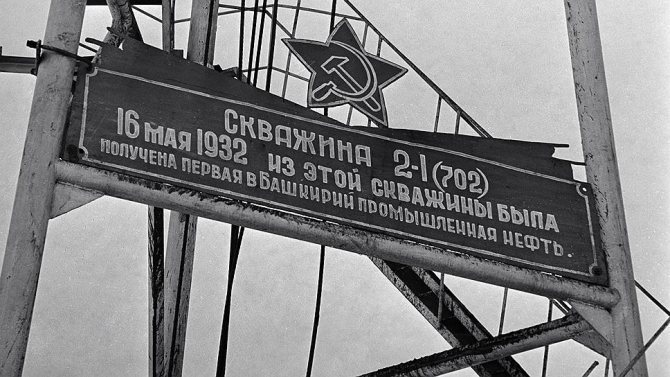
At that time, Bashkiria provided about 90 percent of all oil production in the Volga-Ural oil province.
Read also:
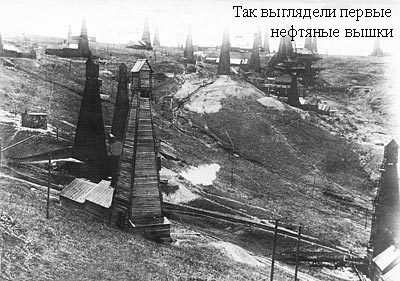
How many years have they been producing oil in Chechnya?
When the Great Patriotic War was going on, German troops, desperate for oil raw materials, captured the oil fields of the Caucasus and broke through to the Baku fields. At this time, oil production in Bashkiria acquired strategic national importance.
At that time, the first oil refineries were already operating in this region, and the Ufa Oil Refinery generally became the largest cracking plant in the USSR. After the Moscow Petroleum Institute was evacuated to Ufa in 1941, the opportunity arose to test the latest scientific achievements in practice. This gave a powerful impetus to the further intensification of the development of the oil industry of the republic, and, as a consequence, the entire Bashkir economy.
The year 1944 was marked by the discovery of the Tuymazinskoye oil field.
Oil from reservoirs of the Devonian period came from exploration well number 100 from a depth of 1,700 meters. This discovery is significant in that it gave impetus to the country's leadership to carry out a complete reorganization of the structure of the oil People's Commissariat of the USSR, and therefore the entire oil industry in the region.
Back in 1932, after the discovery of Ishimbay oil, the Bashkir Geological Exploration Trust was created. Immediately after the end of the Great Patriotic War, in 1946, the Bashneft enterprise was finally formalized.
It included several mining trusts: Tuymazaneft and Ishimbayneft, as well as enterprises such as Bashneftestroy and Bashnefterazvedka. In addition, the Ishimbay Machine-Building Institute, the Bashnefteproekt Scientific Institute and the Bashtekhsnabneft enterprise were included in the structure of Bashneft.
After a very short time, Bashneft took first place in the USSR in terms of oil production volumes.
In the early 1950s, the Leonidovskoye and Konstantinovskoye oil fields of the Devonian period, as well as a multilayer field called Shkapovsky, were discovered in the region. Further discoveries came one after another: Chekmagushevskoye, Mancharovskoye and the largest field of this enterprise - Arlanskoye.
In 1955, Bashneft provided the country with more than 15 million tons of oil, and this figure for the first time exceeded the volumes produced at that time in Baku. So “Second Baku” became the first. The maximum volume of black gold production in the republic occurred in 1967 (almost 48 million tons), and in 1980 Bashneft managed to produce the billionth ton of oil in the entire history of the Bashkir oil fields.
National parks and reserves
On the territory of Bashkortostan there are more than 200 specially protected areas of different categories: national parks, state nature reserves, state nature reserves, local natural parks, natural parks, botanical gardens, natural monuments, health resorts and localities.
State nature reserves:
- Bashkir State Nature Reserve (49.609 thousand hectares) - located in the Beloretsky, Abzelilovsky, Burzyansky districts;
- Reserve "Shulgan-Tash" (22.531 thousand hectares) - located in the Burzyansky district;
- South Ural State Nature Reserve (252,800 thousand hectares) - located on the territory of the Beloretsky district and the Chelyabinsk region.
Need advice on your academic work? Ask a question to the teacher and get an answer in 15 minutes! Ask a Question
Natural parks of national and local significance: Bashkiri National Park (82,300 thousand hectares) – Burzyansky, Meleuzovsky, Kugarchinsky districts; Asly-Kul park (47,500 thousand hectares) – Alsheevsky, Buzdyaksky, Belebeevsky, Davlekanovsky districts); Iremel Park (49,300 thousand hectares) – Uchalinsky and Beloretsky districts; “Kandry-Kul” park (5400 hectares) – Tuymazinsky district; park "Muradymovskoe Gorge" (23,600 thousand hectares) - Kugarchinsky and Zilairsky districts; Zilim park (38,100 thousand hectares) – Gafuriy district.
The total area of state natural reserves is 383,224.9 hectares. Among them are geological, botanical, zoological, hydrological, dendrological, landscape and complex reserves. The most numerous include zoological reserves: Altyn Solok, Askinsky, Bizhbulyaksky, Birsky, Iksky, Karlykhanovsky, Ishimbaysky, Nakazbashevsky, Uraltau, Shaitantau and many others.
In Bashkortostan, there are about 200 natural monuments, occupying 42,264.7 hectares. The largest natural monuments include: the Alga sulfate-calcium spring (Davlekanovsky district); Angasyak pine forests (Dyurtyulinsky district); Arkaulovskoe swamp (Salavatsky district); lake Aslikul (Davlekanovsky district); White Lake (Gafuriysky district); Lake Urgun and Urgunsky pine forest (Uchalinsky district); the rivers Yamanyelga and Sarva (Nurimanovsky district) and others.
Note 1
The diversity of flora and fauna is predetermined by geographical location, climatic conditions, diversity of landscapes and natural zones.
Broad-leaved forests are represented by oak, maple and linden. Here grow the pine, hoofweed, kupena, lily of the valley, raven, violet, and bedstraw. In the coniferous forest zone there are a lot of lingonberries, blueberries, blueberries, linnaea, and various mosses.
In the meadows and steppes there are rhizomatous and tall loose-bush grasses: fescue, timothy, foxtail, brome, bentgrass. Feather grass, fescue, clover, alfalfa, sainfoin, meadowsweet and many other species are common in the steppes.
The territory of Bashkortostan is inhabited by rodents, lagomorphs, insectivores, artiodactyls, bats, predatory mammals, various species of birds, amphibians, reptiles, etc.
The most typical representatives of the fauna: squirrel, chipmunk, roe deer, dormouse, lynx, elk, bear, muskrat, muskrat, hare, gopher, hamster, jerboa, deer, pipistrelle, frogs, newts, toads, spindle, quick and viviparous lizards, steppe viper , snakes, vipers and snakes and many others.
Transportation distances of 60 km or more are unprofitable for production
The first argument is that the long distance of transportation of raw materials (60 km or more) will make production unprofitable and will not allow competition with foreign manufacturers. Alternative deposits are located at a distance of 60 to 500 km from soda production.
The question arises: how does the Bereznikovsky soda plant (belongs to the same group as BSK), which transports limestone from the Chanvinskoye deposit to a distance of 85 km, work in the Perm region? How does the Crimean soda plant work, which brings limestone from the Baksan deposit 120 km away?
The recommendations of the Council under the President of the Russian Federation for the development of civil society and human rights based on the results of the 30th (133rd) on-site meeting in the Republic of Bashkortostan on March 25-28, 2021 states: “In open sources there is evidence that the share of limestone in the cost soda ash is no more than 3.2%. Accordingly, an increase in the distance of transportation of limestone should not lead to a significant increase in the cost of soda.”
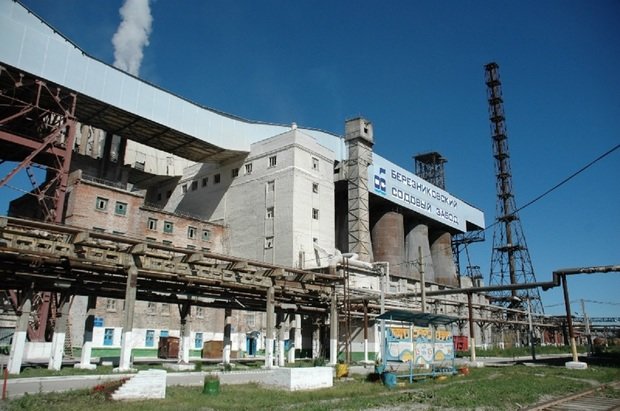
The Bereznikovsky Soda Plant, owned by the same group as BSK, transports limestone from the Chanvinskoye deposit to a distance of 85 km. Photo bsz.ru
The development of alternative deposits will significantly reduce profitability, and the enterprise will close
Let's compare the profitability of other large companies according to IFRS (International Financial Reporting Standards) and operating profitability.
| Company name | Revenue 2021, billion rubles | Operating profit, billion rubles. | Operating profitability |
| PJSC NK Lukoil | 8 036 | 772 | 9,6% |
| PJSC NK Rosneft | 8 076 | 1 284 | 15,9% |
| CIECH GROUP (soda company in Germany), million euros | 3 672 € | 379 € | 10,3% |
| JSC "Bashkir Soda Company" | 61 | 16 | 25,4% |
| JSC "Bashkir Soda Company" with transportation costs doubling | 61 | 9,9 | 16,7%* * In the reporting of BSK according to IFRS, all transport costs are highlighted. With operating expenses of 45,631 million rubles, transportation costs amounted to 5,660 million rubles. or 12% of operating expenses. From these, this calculation is given |
BSK's profitability is higher than that of such giants as Lukoil and Rosneft, and than that of a similar soda plant in Germany. The use of alternative limestone deposits in the worst case will reduce profitability to 10-15%, while the company will remain profitable.


